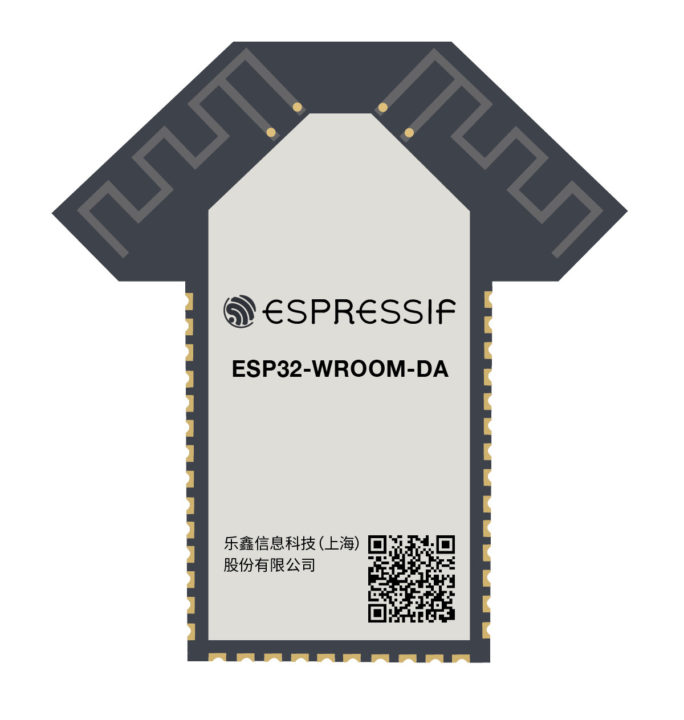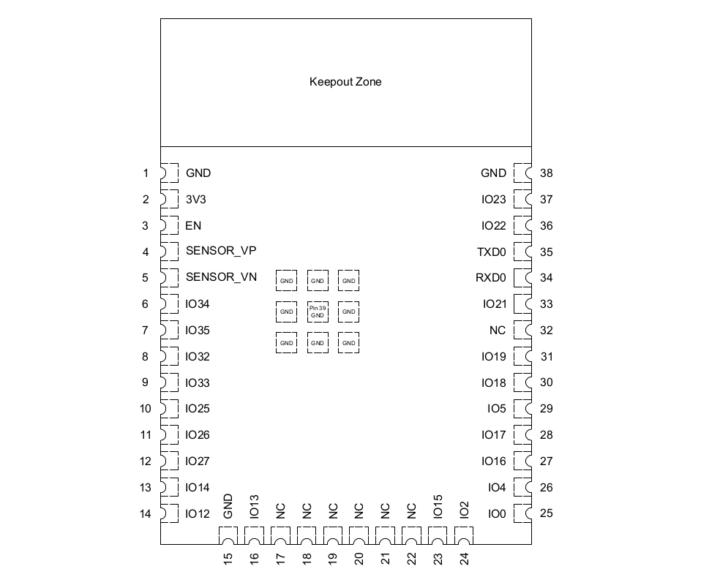Espressif Systems ESP32-WROOM-DA is another ESP32 based WiFI & BLE module with a twist as its dual PCB antenna design aims to provides a longer range and more reliable connectivity by automatically switching to a specific PCB antenna depending on signal strength.
The new module features ESP32-D0WD-V3 dual-core Xtensa LX6 dual-core processor with a maximum frequency of 240 MHz, along with 520 KB of SRAM and 448 KB of ROM, and has been designed to be pin-to-pin compatible with ESP32-WROOM-32E module found in products such as Pico Wireless, in order to ease migration between the two modules.

- WiSoC – Espressif Systems ESP32-D0WD-V3 embedded, Xtensa dual-core 32-bit LX6 microprocessor, up to 240 MHz with 448 KB ROM for booting and core functions, 520 KB SRAM for data and instructions, 16 KB SRAM in RTC
- Storage – 4MB SPI flash
- Connectivity
- WiFi
- 802.11b/g/n up to 150 Mbps
- A-MPDU and A-MSDU aggregation
- 0.4 µs guard interval support
- Center frequency range of operating channel – 2412 ~ 2484 MHz
- Bluetooth
- Bluetooth V4.2 BR/EDR and Bluetooth LE specification
- Class-1, class-2 and class-3 transmitter
- AFH
- CVSD and SBC
- Dual PCB antenna
- WiFi
- Interfaces via 38 castellated holes
- Storage – SD card
- UART, SPI, SDIO, I2C, LED
- PWM, Motor PWM, I2S, IR, pulse counter, GPIO,
- Capacitive touch sensor, ADC, DAC, Two-Wire
Automotive Interface (TWAI, compatible with ISO11898-1)
- Misc – 40 MHz crystal oscillator
- Operating voltage/Power supply: 3.0 ~ 3.6 V
- Dimensions – 19.3 x 18 mm excluding the area with the two antennas
- Operating temperature range – –40 ~ 85 °C
- Certifications
- Bluetooth certification – BQB
- Green certification – REACH/RoHS
- RF certification – FCC/CE-RED/SRRC

The company explains how the two-antenna setup works in more details:
While being used, the module works according to signal strength, selecting the strongest signal to ensure continuous communication. When a weak signal is detected, the module continues to work with an API call that helps it switch to the other antenna with a stronger signal.
That’s about all we know at this stage. Espressif invites interested parties to get more information and/or samples once available at the end of the press release.

Jean-Luc started CNX Software in 2010 as a part-time endeavor, before quitting his job as a software engineering manager, and starting to write daily news, and reviews full time later in 2011.
Support CNX Software! Donate via cryptocurrencies, become a Patron on Patreon, or purchase goods on Amazon or Aliexpress




